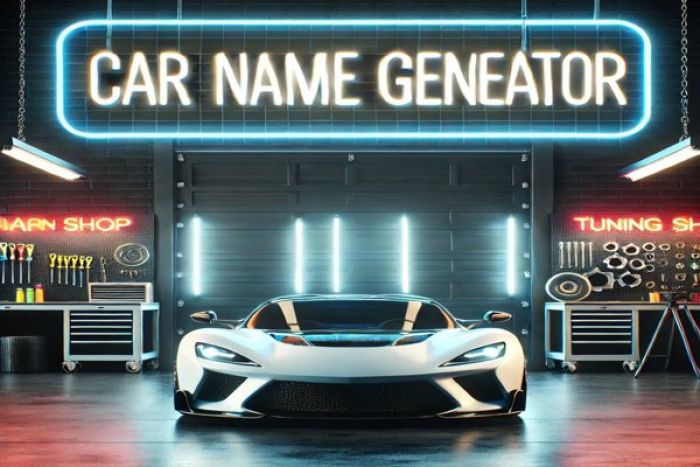One of the largest automobile companies in the world, Toyota, produces about 10 million vehicles annually. Kiichiro Toyoda established the multinational corporation, which was officially incorporated on August 28, 1937. Daihatsu, Hino, Lexus, Ranz, and the company's own Toyota are the five brands under which Toyota Motor Corporation manufactures automobiles.
Toyota has created many different types of car engines, such as four-cylinder and V6 engines. The business uses a specific naming convention for its engines. The first numerical characters identify the model of the engine block. The engine family is indicated by the next one or two letters. The suffix details the engine's characteristics.
Key features and my opinion about the engine
- Production years:1997-2017
- Average lifespan of 1GZ-FE:260,000-290,000 miles
- Fuel supply type:port injection
- Power range:280-312 hp
- Fuel efficiency:awful
- Engine block material:aluminum
- Engine reliability score:high
- The most common problems:electronic throttles are faulty, oil consumption, water pump is not eternal, overheating problems were registered.
.jpg)
Large displacement engines are rarely produced in Japan, where Toyota was founded. Since V12 engines are rare in the country, the automobile company became the sole producer of V12 engines beginning in 1997. The Toyota Century limousine's 5.0 L (305 cu in) DOHC Toyota GZ engine became very popular until 2017.
The 1GZ-FE is the only model in the family of Toyota GZ engines. From 1997 to 2017, this engine served as the driving force behind the second-generation Century limousine. According to the gentlemen's agreement, the official power output advertised in Japan is 206 kW (276 hp) at 5,200 rpm, even though it was publicized in export markets as 220 kW (295 hp).
V12 engines were frequently used in Formula One, especially between the 1966 and 1969 racing seasons. With the exception of the Alfa Romeo, which was first used by the 1979 Brabham BT48, few V12 engines were employed in the following decades. With the debut of the Ferrari 640 racing car in 1989, V12 engines saw a comeback in Formula One.
The challenge for engineers was to create a unit that would operate smoothly, efficiently, and with an unprecedented degree of dependability. So, rather than improving upon the 1UZ-FE V8 from the Lexus LS400, they created Japan's first V12 to be produced in large quantities.
Toyota gained notoriety by crazily over-engineering its powertrains. The 5.0-liter, 48-valve, quad-cam aluminum engine is nothing special at first glance. Little did people know that it was just a part of the automobile company's many surprises for the future of the industry.
This engine resembled two six-cylinder engines in many ways, sharing a common crank. It had separate throttle bodies, fuel injection systems, and dedicated left and right bank intake manifolds. The 1GZ-FE could completely shut down one of the banks in the event of a serious failure and continue to run on the other six cylinders because each bank was managed by a different ECU.
The cylinder heads included combustion chambers, iridium spark plugs, and Toyota's Variable Valve Timing-intelligent or VVT-i technology to increase smoothness and efficiency further. This device never malfunctioned and was bombproof. Because it was tuned to produce significantly less power and torque than it was capable of, it ended up being among the most dependable vehicles ever made.
Specifications of Toyota V12 Engines
Essentially, the 1GZ-FE, configured with a V12 engine, consists of two straight six-cylinder engines that use the same crank. Throttle bodies, EFI systems, and separate left and right cylinder bank inlet manifolds are all present. Additionally, there are separate ECUs for each bank so that in the event of an engine failure, the engine can still function as a six-cylinder engine.
The engine's cylinder bore and piston stroke, which are 81 mm and 80.8 mm, respectively, are comparable to those of 1JZ-GE machines. According to the Japanese Manufacturer's Agreement, the 1GZ-FE's output is 295 HP at 5,200 RPM. However, the engine's actual power is thought to be in the 308-312 HP range.
Thin-wall cast iron liners are cast inside the alloy cylinder block, which has a 60-degree bank angle. The 90-degree 1UZ-FE, a V8, is slightly narrower than the V12. Exhaust valves are 24.5 mm in diameter, while intake valves measure 30 mm, with stem diameters of 5.5 mm on each. The titanium-coated valve adjusting shim is located directly on top of the aluminum alloy valve lifter buckets.
The Electronic Throttle Control System-intelligent (ETCS-i) is a feature of the 1GZ-FE that shows the location of the accelerator pedal and communicates that information to the engine ECU. Cruise control, traction control, idle speed control, and ABS all use throttle motors.
Engine swaps happen more frequently than 1GZ-FE tuning. Sometimes, this V12 is installed on Supras and other automobiles in order to push the boundaries of this engine's potential. Finding ECU aftermarkets can be difficult, though, because you have to suit the ECU of the engine. Between the Engine ECU, ABS/Traction Control ECU, and Body ECU, multiplex communications are used.
The Longevity of Toyota V12 Engines
Getting a luxury car is nice, but you have to make sure that all parts and accessories are working. In addition, you'd want anything about your car to last long. With the Toyota V12 engine, most people had little to no issues in terms of its durability and usability in the long run. When it comes to longevity, the Toyota V12 could challenge any of its counterparts in the market.
In the twenty-first century, marine vehicles became the prevalent application of V12 engines. The engine is also very common in railway locomotives and in major stationary power stations. In many European luxury vehicles and sports cars, V12 engines are also used very often. Since its one of the best sounding engines, the Toyota V12 is one of the most commonly used ones in different industries.
One reason for the V12's longevity is its notorious balance. Like its counterparts, the Toyota V12 engine's banks each perform the same basic tasks as a straight-six engine. The same banks have a spotless first and secondary engine balance. With the right V-angle, the Toyota V-12 engine can run with a perfect balance. In addition, Toyota's four-stroke V12 engine's even firing order has a 60-degree interval.
In a V12 engine, three of the cylinders are always in the power stroke, which reduces the gaps between power pulses and improves the smoothness of the power delivery. Moreover, its length makes it perfect for trucks and other heavy equipment. The narrow width of a V12 engine also makes it an excellent engine in armored tanks, locomotives, and marine vessels.
Many people dub the Toyota V12 the epitome of true luxury. Reviews of this car and its engine have been unanimously favorable. The unmatched relaxation and comfort that a Toyota V12 gives make it a stand-out. Specifically, the G50 model, which is the only Japanese car to have a V12 engine, continues to be an instant hit worldwide. Its low maintenance and durability make it the go-to luxury car of countless people.
Problems with the Toyota V12 Engines
The engine had no major problems that we can highlight in this section. One of the most common issues was the oil consumption even when the engine was new. Over time, these engines also take more oil because their piston rings and valve seals deteriorate and need replacement.
Also, the engine is known to have some electrical problem in its first incarnations because the technologies weren't the most efficient and reliable. But you may easily upgrade the engine using more modern electronic modules and making it much more reliable and durable in terms of electric blocks and modules.
Also, you may have heard about power loss problems. We suppose it's all because of the issues with electronics and also some minor problems with spark plugs and other units. Good diagnosis and quick repair will solve the problem.
The two throttle bodies, which are both wire-driven and separately controlled by the ECUs, are another area of concern. You might need to utilize a cable throttle when using a stand-alone. With the cable system, as opposed to the drive-by-wire, you might run into fine-tuning problems while driving or maintaining idle.
Conclusion
The Toyota V12 engine was a major game changer and continues to be a standard despite the company stopping its production in 2016. Its smoothness and quietness have been emulated by other major companies worldwide. V12 engines are known for their finesse and refinement, and Toyota brought the game to a whole new level during the model's heydays.
Despite being used in only one model, Toyota's V12 left a mark in the memory of car enthusiasts. Despite being bound to the Japanese Automobile Manufacturer's Association's agreement, the company was still able to make an engine that outclasses its counterparts. They created an engine that was severely understressed but still produced a healthy 481Nm of torque at just 1200 rpm.
About the authors
The CarAraC research team is composed of seasoned auto mechanics and automotive industry professionals, including individuals with advanced degrees and certifications in their field. Our team members boast prestigious credentials, reflecting their extensive knowledge and skills. These qualifications include: IMI: Institute of the Motor Industry, ASE-Certified Master Automobile Technicians; Coventry University, Graduate of MA in Automotive Journalism; Politecnico di Torino, Italy, MS Automotive Engineering; Ss. Cyril and Methodius University in Skopje, Mechanical University in Skopje; TOC Automotive College; DHA Suffa University, Department of Mechanical Engineering






Add comment